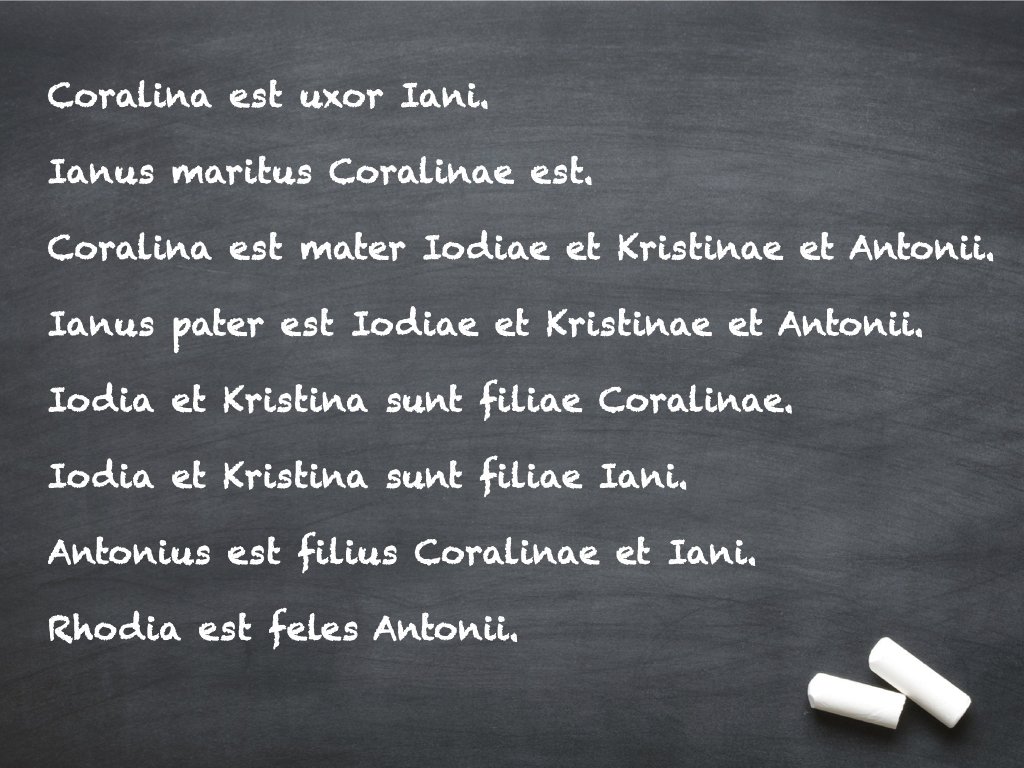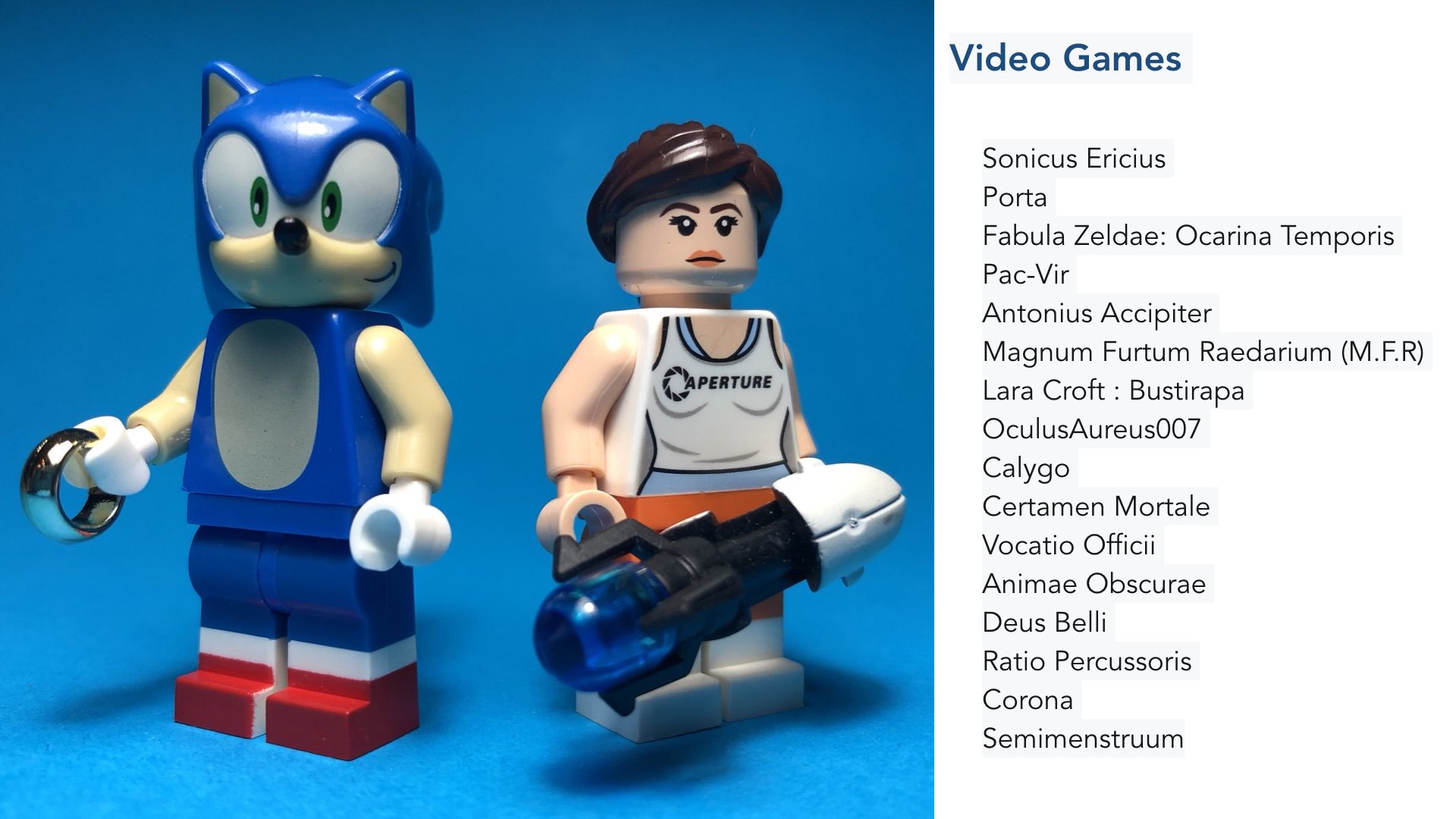I began by giving back the Mea Familia sheets to the students (see Lesson Thirteen). I explained that if everything was ticked, then they had made no errors, but that all errors had been corrected. I urged them to use the corrected versions of any words that I had changed as we completed writing the sentences for our books today.
2. We now moved on to sentences that use the possessive forms of the names. Once again, I modelled the sentences using the family that I grew up with. They wrote similar sentences - as appropriate for their own families - on the Mea Familia handout. In the process, I introduced them to the words “uxor” and “maritus” - wife and husband. Note: Along the way I was sure to ask if anyone’s family had two husbands, or two wives, just as I did for sons and daughters. No one’s did, but it is important to be inclusive in a classroom setting.
3. When we came to the pets I told the story of Rhodie (Rhodia), stressing that she was very much MY cat. The story: My sister Jodie and her best friend Ruth found two kittens under a building at school. They each took one home, naming them Rhodie and Bhodie. We already had two cats, so I - still in primary school - was given the job of putting Rhodie in a box and taking her from house to house asking if anyone would adopt her. Nobody would, so when I got home I begged mum to let me keep her. Mum relented and so Rhodie became very much MY cat. LTDR: I wrote “Rhodia est feles Antonii.” because Rhodie was my cat, but if their pet belonged to the whole family, the students could write something like “Rhodia est feles familiae.”, Rhodie is the family’s cat. At the end I collected up their sheets to check their Latin.
4. We had about 10 minutes left of the lesson, so I decided to show the class two lists; Disney Animated Films and Video Games. With these, I put up each list at the front of the room for about three minutes each while the students discussed and shouted about what they thought the Latin might mean. Then I ran through them quickly - some the students had deduced, and others they got with the right hints. I find it teaches them a little something about cognates, derivatives and the history of words. For example - many of them now know that “corona” means “crown”, but when told that it has another meaning in religious art they soon guess “Halo” - a game know to all. You can access all of the Legonium Lists here.



